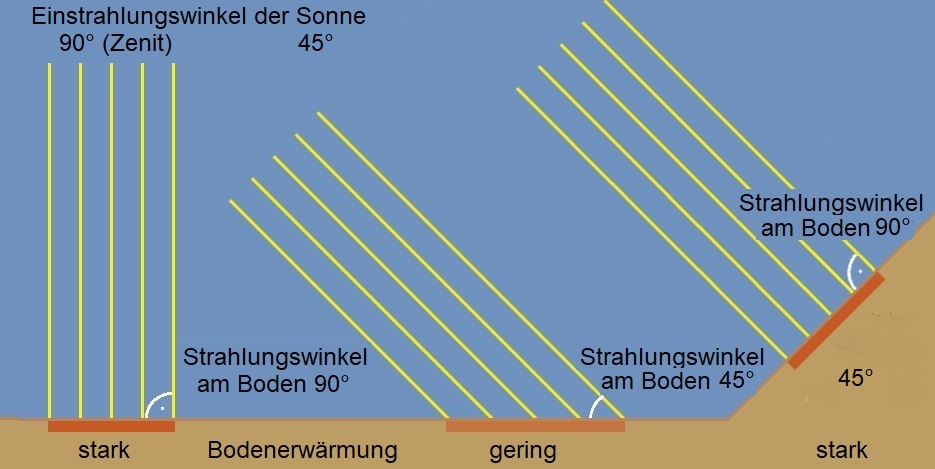In relation to the slope of a vineyard or vineyard area, see under slope.
Inclination
Height difference between two points in relation to their horizontal distance in per cent (%) or degrees (°). The angle is calculated using: arcus tangent x (height difference / distance). An upward slope is called a gradient, a downward slope (the two terms are only linguistically different, mathematically there is no difference). If the slope is 30%, the other point 100 metres away (horizontally) is 30 metres higher, resulting in an angle of 16.69°. An incline of 75% results in an angle of 36.87°. A slope of 100% corresponds to an angle of 45°, i.e. 100 metres horizontally and 100 metres vertically. Up to this gradient, the use of monorack tracks (single-rail rack-and-pinion tracks) is possible in viticulture. An incline of 200% corresponds to an angle of ~64°. For inclination angles just below 90°, the gradient increases to infinity. A gradient of 90° corresponds to a vertical wall. More than 90° corresponds to overhanging walls.

Voices of our members

There is a vast number of sources on the web where one can acquire knowledge about wine. But none has the scope, timeliness and accuracy of the information in the encyclopaedia at wein.plus. I use it regularly and rely on it.
Sigi Hiss
freier Autor und Weinberater (Fine, Vinum u.a.), Bad Krozingen